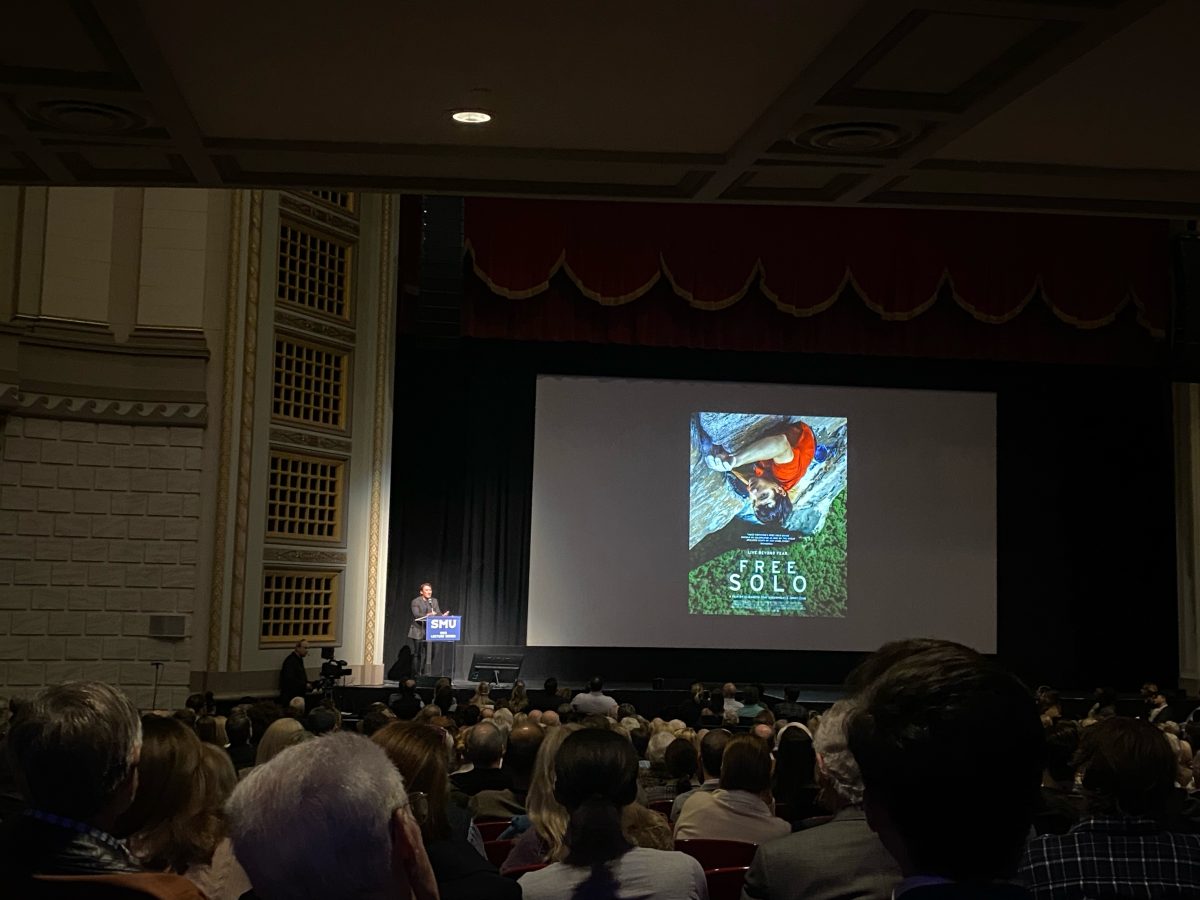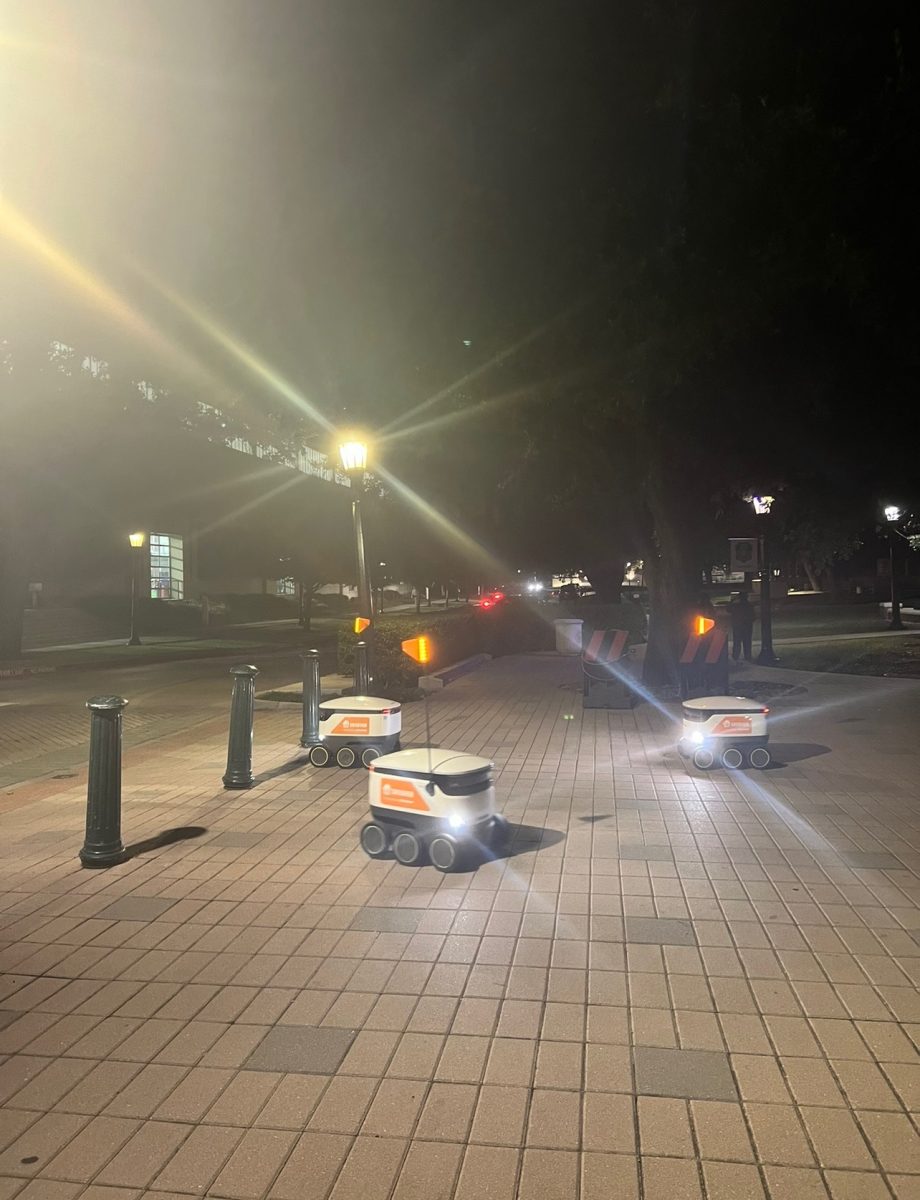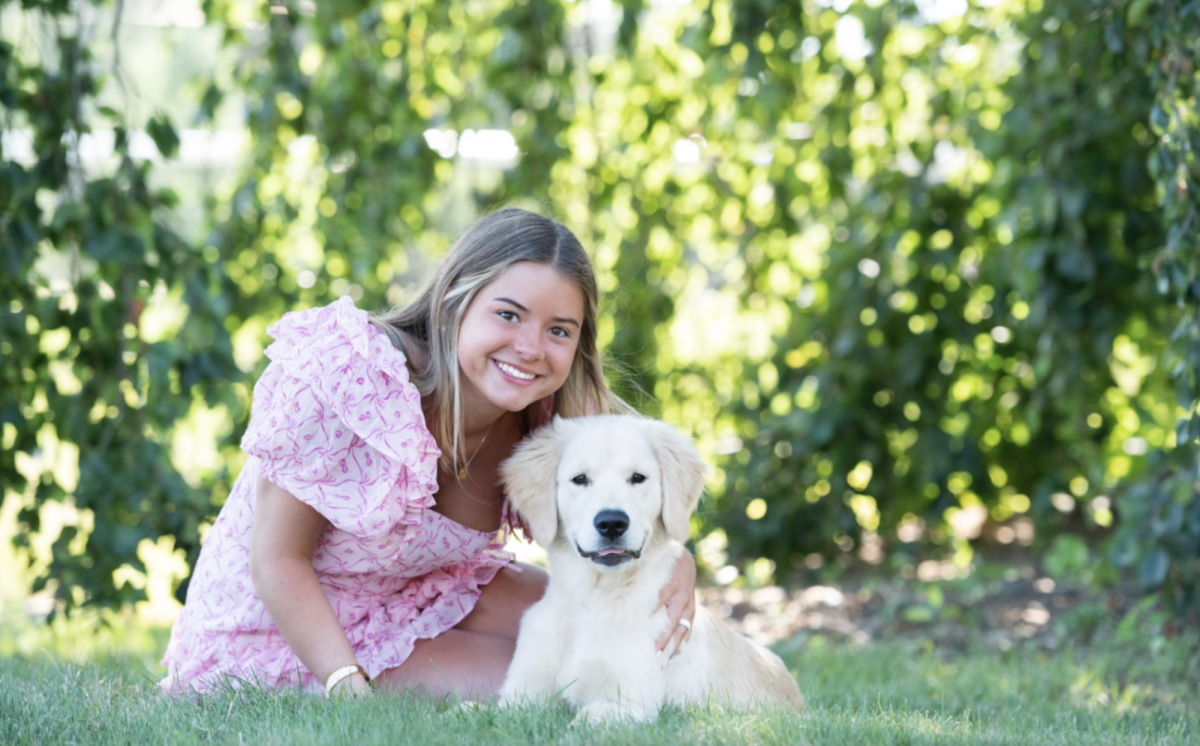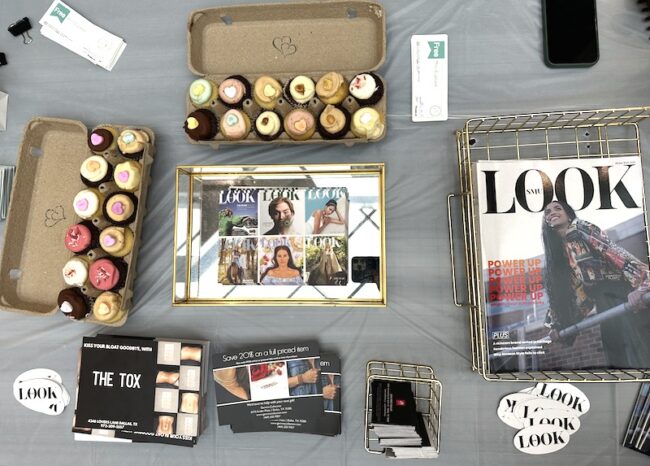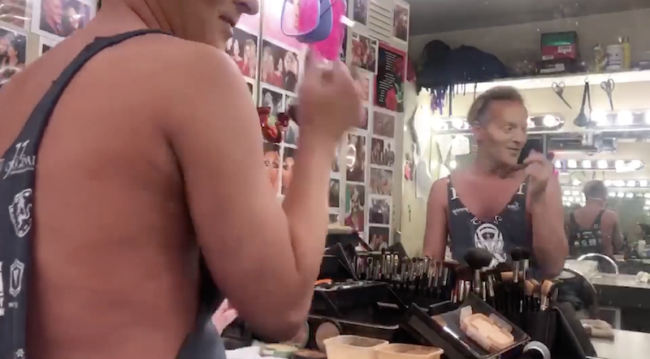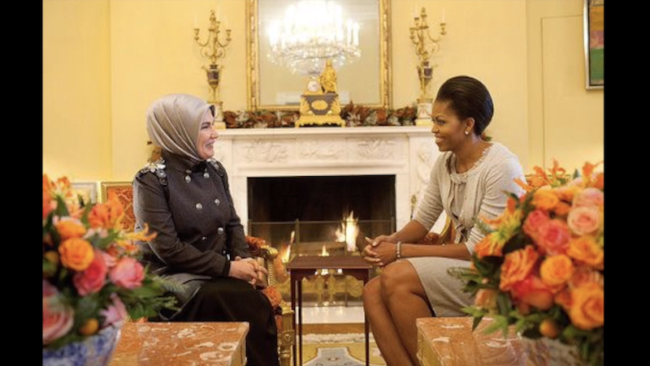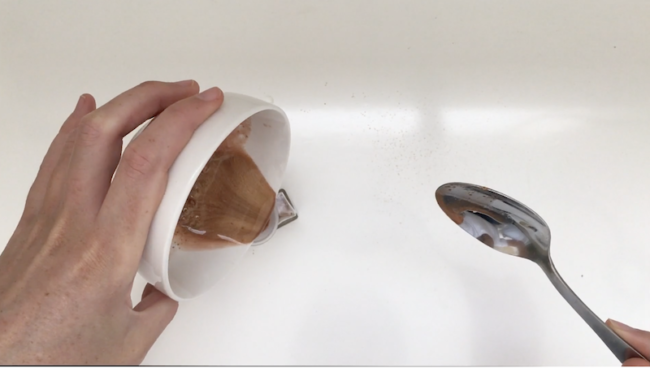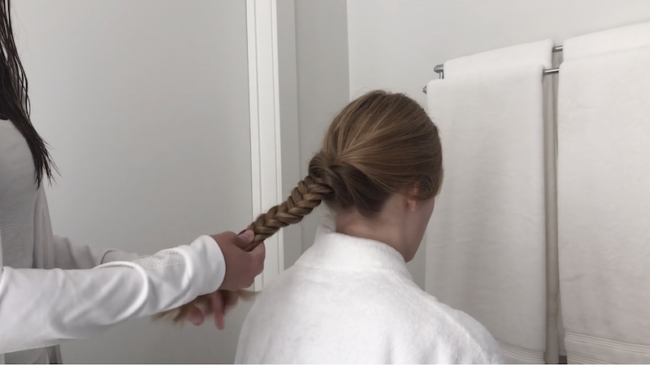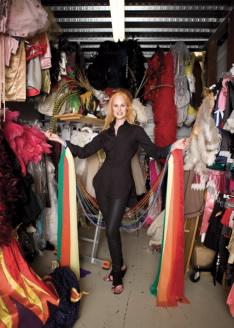
Strimple shows off the wild collection she has acquired after working in the fashion industry for over 30 years. (Photo courtesy of L Style G Style)
There’s no arguing Jan Strimple is the face of fashion in Dallas. Strimple holds a supermodel record that boasts every catwalk from Dallas to Moscow and a revered reputation as a lavish and always on-point event producer. Certainly a fashion force to be reckoned with, Strimple even has mannequins based on her enviable figure.
Strimple maintains a fairly low-key home with her husband Dan Strimple, a PGA golf professional. Their suburban, red brick home rests in a cul-de-sac in Irving, Texas. Decorated with elegant yet understated taste, the only color that really stands out is the paintings of Strimple adorned on several walls. One of Strimple’s mannequins from the world’s leading mannequin design company, London’s Adele Rootstein, also resides in her home as a unique piece of art.
Certainly, Strimple sees herself as a brand, but she comes across as humble. Strimple says, “Very early on in this industry when my star started to rise, I had someone say to me, ‘One of the most obnoxious things in this business is when people believe their own press.’ Your work should speak for you… Truth equals integrity to me and finding truth in our world today is a hard thing to do.”
It appears Strimple has found truth within the prominent thread of family throughout her life. Strimple’s mother acted as her style role model from an early age. “From her background of singing professionally with a wardrobe of jewelry, gorgeous ball gowns and all of that, she’s probably part of the first thing that filled the ‘bling’ quotient in my life. Not everyone looks at their mother in evening gowns and chandelier earrings, and so that was my first ‘Wow, my mother is a little different from everyone else’s mother,'” Strimple says.
When Strimple grew up in Northeastern Ohio, teenagers across the country flocked to the Bobbie Brooks label. Typically a Brooks piece would be a navy a-line skirt that perfectly matched a navy sweater. Strimple never wore Brooks as she and her mother preferred to piece together more original outfits.
They engaged in a weekly Saturday morning ritual of bowling, lunch and then a trip to what their family referred to as “Paris.” In reality, Strimple and her mother would spend about three hours shopping at Goodwill. The styling duo would pick out a large skirt, for instance, and slim it down to fit Strimple.
Strimple says, “My mother’s purpose of doing that was to teach us the value, first of all, but also to think differently, appreciate the beauty of things and not just buy off the rack.”
Strimple first met her husband when she worked as a sales clerk and pumped gas in a country grocery store. Dan Strimple popped into the store to buy a newspaper even though he barely had enough money in his pocket to buy one. Out of newspapers, Strimple bought him a Popsicle instead and the two sat down and talked. Dan Strimple says, “She was 6 feet tall and had on a pair of knee-high boots. She was wearing a dress… that had a slit on the side of it. She also had a scarf on and a black turtleneck. There was no one in the entire town we lived in that looked like Jan.”
Perhaps as an ode to the drama she has known since childhood, today Strimple wears chunky rings, platform wedges to accentuate her height even more and orange toe polish to perfectly match her loose, strawberry blonde hair. When she isn’t donning her signature ponytail at extravagant events, Strimple can be found in her home wearing a simple shirt and pants and just a little lip liner to hide the minute scar she got when she fell off the playground as a 1-year-old.
“Our lifestyle is much more casual today, but it should still have an element of beauty and ease to it,” Strimple says.
Married since 1974, the Strimples originally moved to Dallas in 1980. Even as Strimple’s career skyrocketed, she chose to remain in Dallas over an arguably more fashion-oriented city such as Los Angeles or New York “because I’m married and this was a world that was Dan’s world and it worked. He’s a keeper,” Strimple says.
Strimple originally intended to only dabble in modeling until she secured a job in the business side of fashion. At first, Dallas booking agents did not even think Strimple would be able to work because of her height. However, the Kim Dawson Agency decided to list Strimple.
Lisa Dawson, Kim Dawson’s daughter and the current president of the Kim Dawson Agency, says, “With Jan, it just wasn’t just about her looks or height. If you know Jan, you know what a personality and a presence she is… My mother saw a confident, smart woman who was going to succeed. Whether or not the clients saw that right away, my mom knew people were going to come around and they did.”
When Kim Dawson initially signed Strimple, she was anxious to reveal Strimple’s true measurements on her composite. Strimple says, “When I showed up just a quarter of an inch shy of 6 feet, they marked my first composite at 5 feet 10 inches because they said no one would understand it. I listened to them and then four months later, I said, ‘No, we’re not going to do that. We’re going to put 5 feet 11 inches on there.'”
Strimple’s intuition paid off. Acclaimed fashion designer Bob Mackie called Kim Dawson in 1982 requesting a model in Strimple’s exact measurements. The only model that fit the bill, the rest was history. Strimple flew to New York to walk in one of the top press shows and met Gary White. White was the first agent to travel to Europe and bring models back to the U.S. such as Inès de La Fressange, Karl Lagerfeld’s muse. Fortunate for Strimple, White also marketed his key American girls in Europe.
“He was an agent that understood a more unusual look and beauty… He loved anything exotic and dramatic,” Strimple says.
Strimple’s life changed. She began working in Europe six to eight times a year and fielding offers from agents and designers all over the world, including Christian Dior, Yves Saint Laurent, Bill Blass, Karl Lagerfeld, Givenchy and Carolina Herrera. “It happened all of a sudden-literally. I had agents in 10 or 11 countries in a three-week period of time. I went from never having worked overseas to having agents in all of those countries,” Strimple says.
In addition to her height, Strimple had another advantage up her sleeve. As a capable seamstress, she understood the structure and movement of clothes. Yves Saint Laurent, Hubert de Givenchy and Bob Mackie all regarded Strimple as a fantastic fitting model. “[t]he designers really wanted that feedback, how this moves and if it’s too restricted at the knee or if the armhole is a little tight… The fact that I understood construction and could be of help to designers [was instrumental],” Strimple says.
Following the likes of Twiggy, Strimple joined the ranks of the top-working models emulated by “the Rolls-Royce of mannequins,” as Rootstein is known in the industry.
Flown to London in 1986 to sit with the world-renown sculptor John Taylor, Strimple felt as if the experience was out of another time. She spent four to five hours a day for a week sitting for Taylor.
Rootstein chose Strimple for her slender frame with exaggerated bones, porcelain complexion and long neck.
“My neck is weirdly long. They loved the drama of it, because it added an inch to the height of the mannequins but didn’t make a problem for the fit length on clothes… They left the extra inch in my neck, which is an inch longer than everybody else’s. Since then, that is the new mannequin height for Rootstein,” Strimple says.
Strimple celebrated her mannequin launch in New York City. Calling the event “a big to-do,” a hologram was even made of her. Feeling slightly in shock, Strimple remembers thinking the whole charade was simply “cool.” A former European model turned Rootstein staff member walked past Strimple and said, “Yeah, don’t let it go to your head. In about 15 years when the stores are done with it and the life cycle of a mannequin is over, you’ll end up in a sex shop in Hollywood with strange paraphernalia on your form.”
A far cry from a seedy sex shop, only the finest department stores carry Rootstein mannequins. Strimple’s mannequins were placed in Neiman Marcus, Saks Fifth Avenue and Bergdorf Goodman. Today, they are used in second-tier stores and small boutiques around the U.S. and worldwide.
Similar to her modeling career, Strimple almost fell into event production as well. “I had no goals… I was going to be a buyer or something very much in the business of fashion. I think I instinctively paid attention as I was working around the world and really watched, enjoyed and appreciated the productions and the value of the different teams I was a part of,” Strimple says.
Jimmie Henslee, currently an art director at On Set Management, approached his friend Strimple and asked for her help to plan a fashion show benefitting the Design Industries Foundation Fighting AIDS (DIFFA) in 1990. When Henslee could not plan DIFFA’s next show, Strimple took charge. Two chairwomen from KidneyTexas, an organization benefiting kidney disease research and prevention, saw Strimple’s DIFFA show and hired her.
“I love the honesty of how it all started, because I just put my ideas out there… It was done with zero budget… and bringing people to the table who wanted to help. It was seen and my ideas were celebrated… It kind of evolved and once I did the Kidney show, my phone started ringing for me to do other shows,” Strimple says.
Janet Strimple Productions officially launched in 1991. Since its inception, Strimple has produced events for Highland Park Village, NorthPark Center, Mary Kay, luncheons for high-end department stores and non-profits. Strimple typically orchestrates 60-70 events a year.
An emphasis on loyalty set Strimple apart from the competition early on. As a model, Strimple walked in many of the shows Susan Erwin produced. The tables turned and potential clients started calling Strimple to produce shows Erwin was also interested in. “I had a philosophy very early on that I would not bid on shows. If someone wants my work and they want my ideas, I’ll tell them how much it will cost… Two separate people said they were going to talk to Susan too, and I said, ‘I appreciate you calling, but Susan is a client of mine and a friend of mine and I won’t bid against her,” Strimple says.
Strimple and Erwin remain good friends to this day. “One day when I wake up and decide I’m done, I’ll probably just give all my business to Susan,” Strimple says.
In addition to loyalty, Strimple also stresses the importance of excellence to achieve success. “You have to bring your best to the table, of course, but you have to bring your educated best and that’s what’s missing from a lot of people… You have to seek out beyond what’s expected of you by your school and your peers if you want to be in that top 1 percent,” Strimple says.
It is no secret Strimple demands excellence from her employees as well. She hires one or two key interns year-round and larger events require all hands on deck-as many as 30, according to The Dallas Morning News. The experience is a notorious learning process, or perhaps a wake up call to those who think fashion is just about swiping daddy’s AmEx at the mall.
Strimple says the worst mistake an intern can make is “being unprepared and not bringing something to closure. You have to close projects, you have to start them and you have to prepare properly. When something goes live, 100 percent of it is in two things: preparedness and communication.”
She continues, “One day my intern said to me, ‘I know what you’re going to put on your tombstone: Communicate, communicate, communicate.'”
Nella Adham, one of Strimple’s former ‘minions’ as interns are affectionately sometimes called, knows first-hand how highly Strimple values communication. “One of the best things about Jan is she’s extremely thorough… I’ve seen her explain [how an intern made a mistake]. She doesn’t yell unless a mistake is made the second time,” Adham says of her 2005 internship.
Adham says despite the long hours, “[y]ou do it with a smile on your face, because you feel like you’re learning something and a part of something.” Proof that a stint with Strimple carries serious credit, Adham currently works as a stylist at Renee Rhyner and Company.
Tamar Minassian, a 2010 intern for Strimple and current department specialist and in-house stylist at Tootsies, knows what it’s like to feel the wrath of Strimple’s disappointment. Minassian doesn’t even remember what she did wrong because she says the aftermath was so traumatic. Strimple sent Minassian an email detailing what she had done, what she should have done differently and how it affected the entire production. “She kind of rips you apart so you understand that this isn’t a joke and not to make the same mistake again,” Minassian says.
Strimple’s main goal, of course, is not to criticize. Minassian says, “She takes the time to look at you and see your strengths and where you can be better.”
For those who impress Strimple, their relationship can blossom into a rewarding personal relationship. Levi Palmer, one of Strimple’s most precious protégées now co-owns and acts as the head designer of the menswear line, palmer//harding.
“I consider her to be my fashion mother… When I was a student in London, she wasn’t necessarily guiding me in terms of design but at that point, I was all alone. I would get little tear sheets from Jan that she thought I might find inspiring in the post every three months or so. Those little effects reminded me that I was loved and that I had friends and family that cared about me,” Palmer says.
Strimple’s mentorship has been so invaluable because over the past 30 years, she has rocked runways all over the world and produced events for a variety of clients. She calls Bob Mackie’s last two press shows for 7th on 6th in New York in 2001 her most “honored” experiences, because the man who discovered her as a model also validated her production expertise. “Because of the relationship I had with Bob and the trust he had in me to put his entire show in my hands, it was a really wonderful and huge compliment to me… We got standing ovations,” Strimple says.
Prior to Mackie’s show, Strimple had not worked in New York as a model for almost a decade. Strimple says, “I was standing on the runway and there were two shooters who used to shoot me all the time. They looked up and they were like, ‘Jan! Oh my god, Jan! Are you walking?’ and I walked over and said, ‘No George, I’m producing.”




